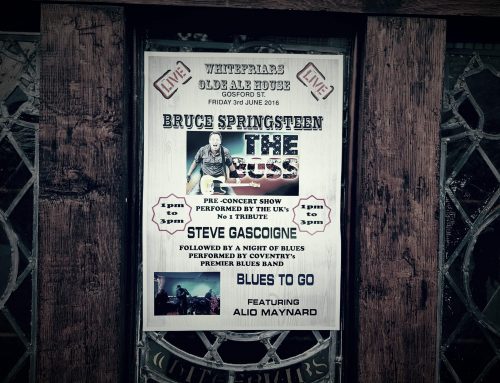“Sometime in mid-July 1518, in the city of Strasbourg, a woman stepped into the street and started to dance.”
There was a fascinating piece on this morning’s Today Programme about a historical curiosity I’d never heard of before. This dancing woman was soon joined by others – men, women and children – and by the end of August 1518 there was more than four hundred of them. This was no lavish, Busby Berkeley production number, however: these people were in the grip of some mad, uncontrollable compulsion. They danced all day and all night and they danced against their will. It was a sweltering summer, and it wasn’t long before some of them started to die…
“This was not the first outbreak of compulsive dancing in Europe. In fact, there had been as many as ten dancing epidemics before 1518, one in 1374 engulfing many of the towns of modern day Belgium, north-eastern France and Luxembourg.”
Waller concluded:
“In the long run, the fervent supernaturalism of the medieval world had to make way for the rise of modern science and rationality. The dancing madness was effectively starved out of existence. Even so, half a millennium later it still serves as a reminder of the ineffable strangeness of the human brain.”
Maybe so. Waller’s conclusion seemed to encourage us all to feel ever-so slightly smug and superior: those 16th Century eejits – with their crazy medieval theological hang-ups – might be susceptible to a terminal outbreak of the Martha and the Vandellas, but that sort of thing couldn’t happen here. Thanks to the Enlightenment, the Renaissance and Sky Plus we’re all way too smart to behave quite so stupidly.
Maybe, and maybe not. Sentiments like that may pander to the prejudices of certain types of Radio 4 listener, but I don’t quite buy into them. Our belief systems may have moved on a bit (although some times I wonder…), but I’m inclined to believe that our capacity for buggier-than-batshit crazy acts of mass hysteria remains the same.
As an Orson Welles fan, the reported incidents of widespread panic in the US following The Great Round One’s 1938 War of the Worlds radio play spring to mind. But there are plenty of other examples. Here are just a few:
The Taginyika Laughter Epidemic of 1962. This was a more recent variation of the dancing mania described above, except instead of doing it mid-80s, what-were-they-thinking, Jagger & Bowie-style this time it involved a particularly bad case of the giggles. This “Laughing Matter” took place in the vicinity of the village of Kashasha in what is now called Tanzania and according to its Wikipedia entry:
“The epidemic seems to have started within a small group of students in a boarding school, possibly triggered by a joke. Laughter, as is commonly known, is in some sense contagious, and for whatever reason in this case the laughter perpetuated itself, far transcending its original cause…
“The school from which the epidemic sprang was shut down; the children and parents transmitted it to the surrounding area. Other schools, Kashasha itself, and another village, comprising thousands of people, were all affected to some degree. Six to eighteen months after it started, the phenomenon died off.”
The Seattle Windshield Pitting Epidemic, 1954. Here’s another example, this time from CSICOP – the scourge of Robert Anton Wilson, the publishers of the Skeptical Inquirer and the artists more formally known as the Committee for the Scientific Investigation of Claims of the Paranormal:
“On March 23, 1954, reports appeared in Seattle newspapers of damaged automobile windshields in a city eighty miles to the north. While initially suspecting vandals, the number of cases spread, causing growing concern. In time, reports of damaged windshields moved closer to Seattle. According to a study by Nahum Medalia of the Georgia Institute of Technology and Otto Larsen of the University of Washington (1958), by nightfall on April 14, the mysterious pits first reached the city, and by the end of the next day, weary police had answered 242 phone calls from concerned residents, reporting tiny pit marks on over 3,000 vehicles. In some cases, whole parking lots were reportedly affected. The reports quickly declined and ceased. On April 16 police logged forty-six pitting claims, and ten the next day, after which no more reports were received.”The most common damage report involved claims that tiny pit marks grew into dime-sized bubbles embedded within the glass, leading to a folk theory that sandflea eggs had somehow been deposited in the glass and later hatched. The sudden presence of the ‘pits’ created widespread anxiety as they were typically attributed to atomic fallout from hydrogen bomb tests that had been recently conducted in the Pacific and received saturation media publicity. At the height of the incident on the night of April 15, the Seattle mayor even sought emergency assistance from President Dwight Eisenhower.”
And here’s another:
The Monkey Man of New Delhi, 2001. Reports began to circulate in May 2001 of a strange, monkey-like creature that was scaring the blue bekrishna out of the good people of New Delhi. According to Wikipedia:
“Eyewitness accounts were often inconsistent, but tended to describe the creature as about four feet (120 cm) tall, covered in thick black hair, with a metal helmet, metal claws, glowing red eyes and three buttons on its chest.
“Theories on the nature of the Monkey Man ranged from an avatar of a Hindu god, to an Indian version of Bigfoot, to a cyborg that could be deactivated by throwing water on the motherboard concealed under fur on its chest.
“Many people reported being scratched, and two (by some reports, three) people even died when they leapt from the tops of buildings or fell down stairwells in a panic caused by what they thought was the attacker. At one point, exasperated police even issued artist’s impression drawings in an attempt to catch the creature. Many people today still believe this ‘monkey man’ continues to haunt the streets.”
Would you like to see a police artist’s impression of the Monkey Man? I’m sure you would:
I regret to say there were no sightings of accomplices, although I’d like to think that a fish, a pig and a foxy monk were somehow involved.
This all illustrates – to my mind at least – that really bloody odd acts of mass hysteria are not confined to some bygone age. Others may argue, of course, that these bizarro events may have taken place in modern times, but only in the strictly chronological sense of the term. They all occurred within cultures where the “supernaturalism of the medieval world” was still hard-wired into the local consensus reality. Over here its different. The sort of archaic mindsets that would cause a mass of people to act as an irrational whole is not part of our world.
These people obviously don’t read the financial pages.









Leave A Comment